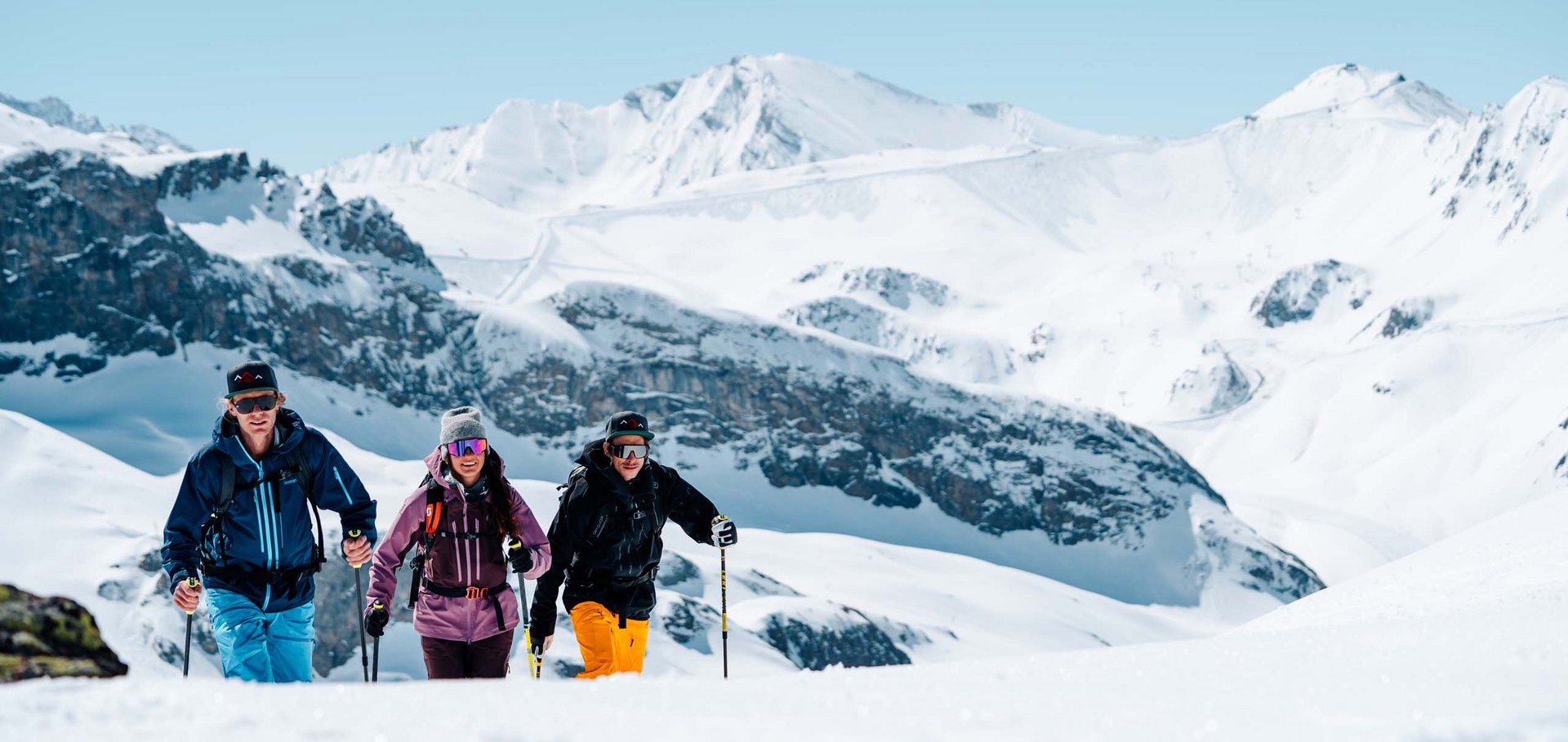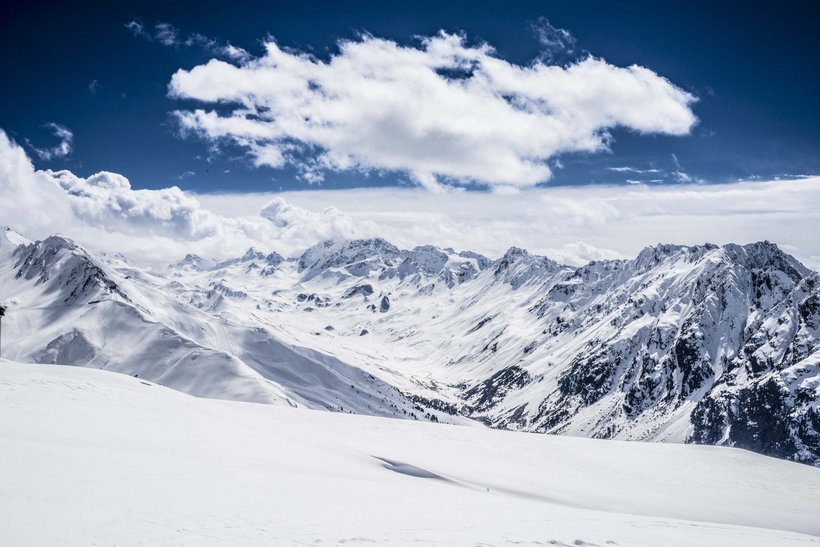A joyful winter workout in untouched nature
Snowshoeing in and around Ischgl
Slow down, savour the silence, and feel the freedom of rugged, untouched nature: snowshoeing in Paznaun offers wide-open space and lightness of heart.
Where the mountain air is at its clearest, the snow at its purest, and the winter sun softly glows over the landscape, you feel your thoughts quieten and your senses sharpen. Snowshoeing around the Hotel Seespitz is an adventure that leaves a lasting impression.
Spanning more than 100 kilometres and roughly 1,000 metres of elevation, Paznaun offers a diverse network of marked winter hiking trails and exciting snowshoe routes away from the pistes. Set out solo into Tyrol’s wilderness or join a snowshoe tour with a mountain guide – either way, carefree, fulfilling moments await!
Our favourite routes
For leisurely days:
Ischgl to Mathon – winter hiking trail
Difficulty: easy
Distance: approx. 5–5.5 km | 1–1.5 hours
Elevation: ascent 133 m | descent 20–80 m depending on the route
A laid-back, well-marked trail along the Trisanna. Mostly flat to gently undulating, partly following the cross-country ski trail, through open woodland and across snow-covered Alpine meadows. Ideal for beginners and families.
For a little more challenge:
“Mutta” – winter hiking and snowshoe trail
Difficulty: intermediate
Distance: approx. 6 km | 1.5 hours
Elevation: ascent and descent 267 m
A slightly longer, steeper loop with more elevation that leads into peaceful terrain with superb views. Perfect for hikers with a good base level of fitness.
For real experts:
Silvretta winter trail – Baggerloch
Difficulty: challenging
Distance: approx. 18–19 km | 2–3 hours
Elevation gain: ascent and descent 278 m
A scenic, panoramic route with an Alpine feel, leading past the frozen Vermunt lakes to the Bielerhöhe at 2,040 metres above sea level. Physically demanding; recommended only for those with snowshoeing and Alpine experience.
Staying safe in the mountains
Always check the latest weather and avalanche reports before you set off on your hike. If in doubt, stay on the marked winter hiking trails or book a qualified mountain guide. If you venture into open terrain, it’s essential that you carry an avalanche transceiver, shovel, and probe – and know how to use them.









